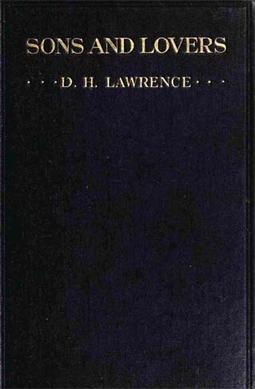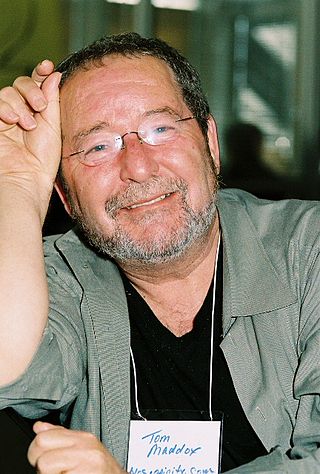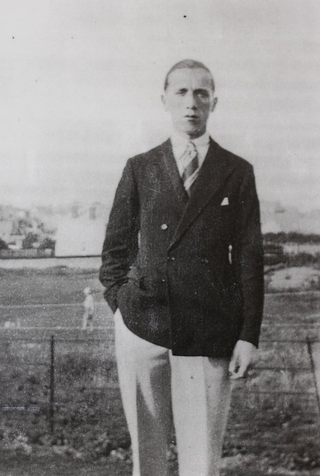
David Herbert Lawrence was an English novelist, short story writer, poet and essayist. His modernist works reflect on modernity, social alienation and industrialization, while championing sexuality, vitality and instinct. Several of his novels, Sons and Lovers, The Rainbow, Women in Love, and Lady Chatterley's Lover, were the subject of censorship trials for their radical portrayals of sexuality and use of explicit language.

Richard Aldington was an English writer and poet. He was an early associate of the Imagist movement. His 50-year writing career covered poetry, novels, criticism and biography. He edited The Egoist, a literary journal, and wrote for The Times Literary Supplement, Vogue, The Criterion, and Poetry. His biography of Wellington (1946) won him the James Tait Black Memorial Prize.

Henry Valentine Miller was an American novelist, short story writer and essayist. He broke with existing literary forms and developed a new type of semi-autobiographical novel that blended character study, social criticism, philosophical reflection, stream of consciousness, explicit language, sex, surrealist free association, and mysticism. His most characteristic works of this kind are Tropic of Cancer, Black Spring, Tropic of Capricorn, and the trilogy The Rosy Crucifixion, which are based on his experiences in New York and Paris. He also wrote travel memoirs and literary criticism, and painted watercolors.

Sons and Lovers is a 1913 novel by the English writer D. H. Lawrence. It traces emotional conflicts through the protagonist, Paul Morel, and his suffocating relationships with a demanding mother and two very different lovers, which exert complex influences on the development of his manhood. The novel was originally published by Gerald Duckworth and Company Ltd., London, and Mitchell Kennerley Publishers, New York. While the novel initially received a lukewarm critical reception, along with allegations of obscenity, it is today regarded as a masterpiece by many critics and is often regarded as Lawrence's finest achievement. It tells us more about Lawrence's life and his phases, as his first was when he lost his mother in 1910 to whom he was particularly attached. And it was from then that he met Frieda Richthofen, and around this time that he began conceiving his two other great novels, The Rainbow and Women in Love, which had more sexual emphasis and maturity.

Lady Chatterley's Lover is the last novel by English author D. H. Lawrence, which was first published privately in 1928, in Italy, and in 1929, in France. An unexpurgated edition was not published openly in the United Kingdom until 1960, when it was the subject of a watershed obscenity trial against the publisher Penguin Books, which won the case and quickly sold three million copies. The book was also banned for obscenity in the United States, Canada, Australia, India and Japan. The book soon became notorious for its story of the physical relationship between a working-class man and an upper-class woman, its explicit descriptions of sex and its use of then-unprintable profane words.

Women in Love (1920) is a novel by English author D. H. Lawrence. It is a sequel to his earlier novel The Rainbow (1915) and follows the continuing loves and lives of the Brangwen sisters, Gudrun and Ursula. Gudrun Brangwen, an artist, pursues a destructive relationship with Gerald Crich, an industrialist. Lawrence contrasts this pair with the love that develops between Ursula Brangwen and Rupert Birkin, an alienated intellectual who articulates many opinions associated with the author. The emotional relationships thus established are given further depth and tension by an intense psychological and physical attraction between Gerald and Rupert.

George Norman Douglas was a British writer, now best known for his 1917 novel South Wind. His travel books, such as Old Calabria (1915), were also appreciated for the quality of their writing.

Maurice Henry Hewlett was an English historical novelist, poet and essayist.

Harold Shea is the protagonist of five science fantasy stories by the collaborative team of L. Sprague de Camp and Fletcher Pratt, as well as later stories by de Camp alone, Christopher Stasheff, Holly Lisle, John Maddox Roberts, Roland J. Green, Frieda A. Murray, Tom Wham, and Lawrence Watt-Evans. De Camp and Stasheff collectively oversaw the continuations. The series is also known as the "Enchanter" series, the "Incomplete Enchanter" series or the "Compleat Enchanter" series.
John Worthen taught at universities in North America and Wales before becoming Professor of D.H. Lawrence Studies at the University of Nottingham, where he remains Emeritus Professor. His inaugural lecture as Professor of D.H. Lawrence Studies was published under the title Cold Hearts and Coronets. His career as Lawrence’s biographer began in the 1980s and culminated in the celebrated D.H. Lawrence: The Early Years 1885–1912, the first part of the definitive three-volume Cambridge biography. Material from this project later formed the foundation of Worthen's single-volume study, D.H. Lawrence: The Life of an Outsider (2005).

Tom Maddox was an American science fiction writer, known for his part in the early cyberpunk movement.
The Black Sun Press was an English-language press noted for publishing the early works of many modernist writers including Hart Crane, D. H. Lawrence, Archibald MacLeish, Ernest Hemingway, and Eugene Jolas. It enjoyed the greatest longevity among the several expatriate presses founded in Paris during the 1920s, publishing nearly three times as many titles as did Edward Titus under his Black Manikin Press. American expatriates living in Paris, Harry Crosby and his wife Caresse Crosby founded the press to publish their own work in April 1927 as Éditions Narcisse. They added to that in 1928 when they printed a limited edition of 300 numbered copies of "The Fall of the House of Usher" by Edgar Allan Poe. They enjoyed the reception their initial work received, and decided to expand the press to serve other authors, renaming the company the Black Sun Press, following on Harry's obsession on the symbolism of the sun.

The Plumed Serpent is a 1926 political novel by D. H. Lawrence; Lawrence conceived the idea for the novel while visiting Mexico in 1923, and its themes reflect his experiences there. The novel was first published by Martin Secker's firm in the United Kingdom and Alfred A. Knopf in the United States; an early draft was published as Quetzalcoatl by Black Swan Books in 1995. The novel's plot concerns Kate Leslie, an Irish tourist who visits Mexico after the Mexican Revolution. She encounters Don Cipriano, a Mexican general who supports a religious movement, the Men of Quetzalcoatl, founded by his friend Don Ramón Carrasco. Within this movement, Cipriano is identified with Huitzilopochtli and Ramón with Quetzalcoatl. Kate eventually agrees to marry Cipriano, while the Men of Quetzalcoatl, with the help of a new president, bring about an end to Christianity in Mexico, replacing it with pagan Quetzalcoatl worship.

Mr Noon is an unfinished novel by the English writer D. H. Lawrence. It appears to have been drafted in 1920 and 1921 and then abandoned by the author. It consists of two parts.

Vivian Rees Davies, known as Rhys Davies, was a Welsh novelist and short story writer, who wrote in the English language.

Priest of Love is a 1981 British biographical film about D. H. Lawrence and his wife Frieda played by Ian McKellen and Janet Suzman. It was a Stanley J. Seeger presentation, produced and directed by Christopher Miles and co-produced by Andrew Donally. The screenplay was by Alan Plater from the biography The Priest of Love by Harry T. Moore. The music score was by Francis James Brown and Stanley J. Seeger, credited jointly as "Joseph James".

The Tales of Beedle the Bard is a book of fairy tales by author J. K. Rowling. There is a storybook of the same name mentioned in Harry Potter and the Deathly Hallows, the final novel of the Harry Potter series.
William Humphrey was an American novelist, memoirist, short story writer, and author of literary sporting and nature stories. His published works, while still available in French translation, largely have been out of print until recently. Home from the Hill and The Ordways are available from LSU Press. In 2015, Open Road Media published the complete works of William Humphrey in digital form.
Paul Johnston was among the printers and artists who defined a new American style of printing, typography and book design in the 1920s and 1930s.
Harry Alvin Duncan was a hand-press printer, author, librettist, translator, and publisher under his imprint the Cummington Press. He was known for publishing early works by Robert Lowell, Tennessee Williams, Wallace Stevens, Allen Tate, Marianne Moore, William Logan, Stephen Berg, and Dana Gioia. A 1982 Newsweek article about the rebirth of the hand press movement said that Duncan was "considered the father of the post-World War II private-press movement."
















